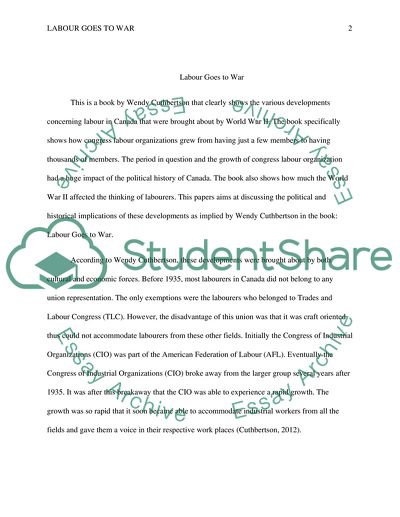Cite this document
(“Labour Goes to War by Wendy Cuthbertson Book Report/Review”, n.d.)
Labour Goes to War by Wendy Cuthbertson Book Report/Review. Retrieved from https://studentshare.org/history/1810210-book-review-of-labour-goes-to-war-with-course-commentary-related-to-canadian-business-labour-history
Labour Goes to War by Wendy Cuthbertson Book Report/Review. Retrieved from https://studentshare.org/history/1810210-book-review-of-labour-goes-to-war-with-course-commentary-related-to-canadian-business-labour-history
(Labour Goes to War by Wendy Cuthbertson Book Report/Review)
Labour Goes to War by Wendy Cuthbertson Book Report/Review. https://studentshare.org/history/1810210-book-review-of-labour-goes-to-war-with-course-commentary-related-to-canadian-business-labour-history.
Labour Goes to War by Wendy Cuthbertson Book Report/Review. https://studentshare.org/history/1810210-book-review-of-labour-goes-to-war-with-course-commentary-related-to-canadian-business-labour-history.
“Labour Goes to War by Wendy Cuthbertson Book Report/Review”, n.d. https://studentshare.org/history/1810210-book-review-of-labour-goes-to-war-with-course-commentary-related-to-canadian-business-labour-history.


